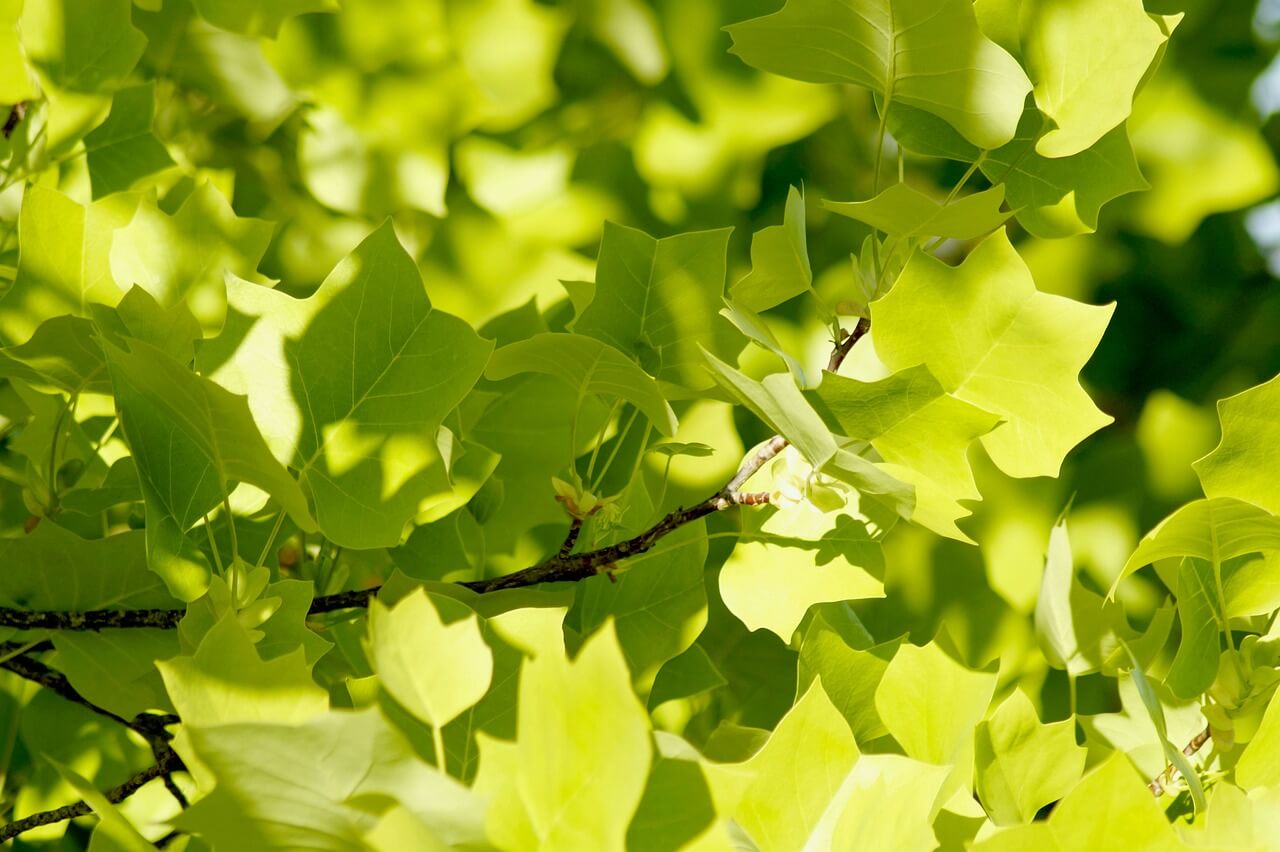Has your maple tree been looking sick lately? Maybe you’ve noticed a lot of dead branches or changes in the leaves. There are many different things that may cause a maple tree to become sick or die. Read on to learn more about how to save a dying maple tree.
What You'll Learn Today
How Do I Know If My Maple Tree is Dying?

Trees rarely die suddenly. It’s usually a gradual process that involves the tree slowly becoming more diseased or rotted.
For this reason, you may not notice right away that your tree has a problem. The good thing is, if you catch the signs and symptoms of a dying tree early enough, there’s a good chance you’ll be able to correct the problem and save the tree.
So, what signs and symptoms should you be looking for? According to experts, these are the top symptoms of maple tree decline:
1. Slow growth
Does your tree seem to be growing more slowly than it has in the past? Is it still putting out new growth, and if so, does that new growth look healthy and appear to be growing normally?
Different maple tree species have different growth rates, and some types naturally grow much slower than others. They also reach maturity at different ages.
But, if you know your tree is growing slower than it should be, and it hasn’t reached maturity yet, a slow growth rate could mean a sick tree.
2. Premature color changes
You probably have a pretty good idea of when trees start showing their fall colors in your area. If your maple tree leaves start changing color a month or two (or more) before their usual time, this could be cause for concern.
3. Other leaf changes
Do the leaves on your tree look paler than they have in the past? Do they appear smaller than normal, and are there fewer of them than you remember from past years?
Changes in the leaves are often the first sign that your tree may be sick or dying. Don’t take these changes lightly.
4. Dying areas
It’s normal for trees to have an occasional dead branch, but too many could be a sign of trouble. If your tree has a lot of unexplained dead branches, or if branches continue to die after you’ve pruned away other dead branches, you may have a diseased or dying tree.
Some other signs to look for include:
- Brittle or cracked bark.
- Mushrooms growing on the tree or at the base of the trunk.
- Pests infesting the wood.
- A tree that develops a lean.
Can a Maple Tree Come Back to Life?
For a tree that is fully dead, there is nothing you can do to bring it back to life. Fortunately, in most cases, you’ll notice problems in the tree long before it dies completely, and many of these problems can be fixed.
If you suspect your tree has a disease, you may want to try and identify the disease so you can treat it yourself. Check out the video below to learn about some common diseases that affect maple trees.
The best thing to do when you suspect your tree is sick or dying is to call a professional arborist. The arborist will be able to identify what is harming your tree and give you advice on what can be done about it.
How Do You Treat a Sick Maple Tree?
The method of treatment for a tree will depend somewhat on what is making it sick. Again, you’ll want to call an arborist to help you determine what exactly is affecting your tree and how exactly the problem can be treated.
Some treatments the arborist may recommend include:
1. Spraying for specific diseases or pests
Depending on what problem your tree has, the arborist may be able to recommend an herbicide, pesticide, or fungicide that will take care of the problem.
This product may be something you spray on yourself, or you may choose to have it done professionally. Especially if the tree is larger, having a professional do the treatment may be the best option.
2. Removing all problem areas
Regular pruning, especially when a tree is young, is a great way to keep it growing healthy and strong. Even when a tree is older, it’s important to prune away any dead, diseased, or broken branches as soon as you notice them.
If you have a sick tree, sometimes the cure is as simple as removing the branches that are affected. Having these problem areas pruned away, in many cases, will allow the tree to recover.
3. Fertilizing the tree
Sometimes, your tree may be sick simply because it isn’t getting the nutrients it needs. This could be because of poor soil quality.
If this is the case, adding a high quality fertilizer to the soil around the tree may be enough to allow it to recover.
How Can I Help a Struggling Maple Tree?

Before calling an arborist, you may want to try and help your sick maple tree on your own. Is there anything you can do to help a sick tree recover its health?
The answer, of course, will depend on what is ailing your tree and how far gone it is. But if your tree still has a lot of living and healthy branches, it may be possible for you to save it on your own.
Here are a few things you can do to care for a struggling maple tree:
- Make sure it has enough water. If you’ve been experiencing a period of drought in your region, or if you live in a dryer climate, it’s possible your maple is simply dehydrated. Water it well about once a week, making sure the water penetrates at least 12 inches of soil, and see if the tree improves over the next couple of months.
- Fertilize the tree. Adding a slow-release fertilizer specifically formulated for trees may also help your maple get better. These fertilizers can be found at your local lawn and garden store and should be applied according to package directions.
- Protect it from salt spray. If your tree grows near the road and is frequently exposed to salt spray during the winter, this exposure could cause problems long-term.
If the tree is young enough, consider moving it to a location further back from the road. If transplanting the tree is impossible, try and shield the trunk and the ground around it from the spray during winter.
- Trim back unhealthy branches. Again, pruning is extremely important, as it can slow the spread of disease and strengthen a sick tree.
If you’re able to safely prune away any dead or sick branches, do so as soon as possible. Otherwise, call a professional and have it done for you.
Conclusion
It is possible to save a dying maple tree if you catch and treat the problem soon enough. Removing dead or diseased branches, treating for diseases or pests, and making sure the tree receives enough water and fertilizer are all ways you can help your struggling tree recover.
A professional arborist may be able to help you identify the problem and recommend treatment options.
Many people don’t understand the fact that the roots of maples trees also need to breath like humans. So, if you plant them too deeply, they may rot and die.
have a 120 year old hollow maple tree. A large limb fell off in a storm revieling the hollow inside. do not want to kill it. How do I save it.